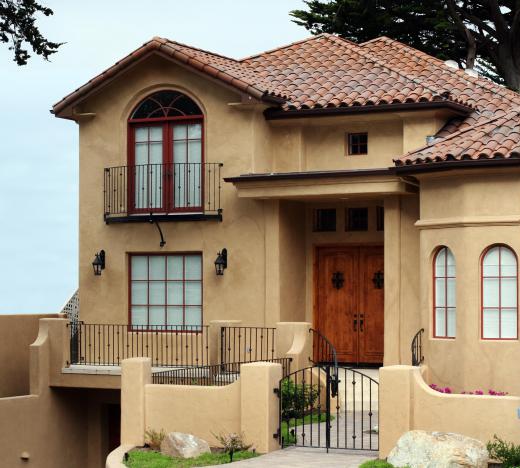Lime plaster is a building material made of water, sand, and lime. It is often confused with lime mortar or other kinds of plaster which either contain insignificant amounts of lime or cement, which drastically changes the properties of the material. The substance comes in putty or powder form. The most commonly-used form of this kind of plaster is hydrated lime, also known as air lime or high calcium lime.
Hydrated lime is first set with water and then with carbonation, also known as the re-absorption of CO2. This means that it needs air in order to be fully set. It can take hydrated lime plaster several months to completely dry, but it is desirable for construction due to ease of application.

Though its use declined with the development of cement, lime plaster has been used since ancient times as a material for buildings, pavement, and for other smaller items such as pots. Modern archeological digs have found the material in areas as diverse as Egypt, China, and Mexico, where it was frequently used by the Aztecs. Horse hair was a common binding ingredient in traditional forms of lime plaster.
Lime mortar was also an ancient building material in several cultures. It is also made of lime, sand, and water. The primary difference between lime mortar and lime plaster is the specific use of the material.

As it is a caustic material, care should be taken to avoid contact with the skin and eyes when using this kind of plaster. It is important to wear protective clothing, including gloves, goggles, and garments of adequately sturdy material. In order to be able to quickly address accidental contact with the material, it is advisable to have clean water available near the work site.
In the case of accidental exposure to lime plaster, the first step is usually to remove the material from the affected area. Then any kind of a mild acid, such as lemon juice or vinegar, can be used to neutralize what remains on the skin. If the eyes are affected, the area should be thoroughly rinsed with water and a medical professional should be consulted as soon as possible.
With the rise in popularity of green building practices, lime plaster has also seen resurgence in popularity. It has come to be used as a frequent substitute for regular stucco. This is primarily because lime plaster emits an exponentially lower level of CO2 than building materials with a cement base.
